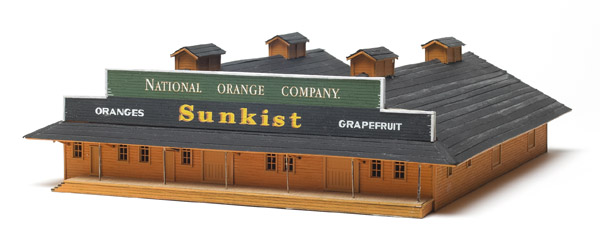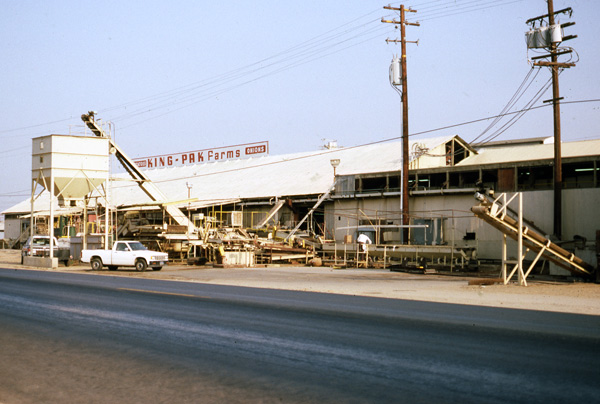
The most recent example: Edison, Calif., the town I’m working on. Edison is on the Southern Pacific’s Tehachapi Pass route and is 71⁄2 miles south of Bakersfield on the Edison Highway. The railroad there is flat, straight, and double-tracked, and it’ll be 6 more miles before the ascent up the Tehachapi Mountains begins. You’re at the southern end of the Central Valley, which would be a desert were it not for irrigation.
The Central Valley produces a third of the fruit and vegetables grown in the United States, so whether you realize it or not, you almost certainly eat several bushels of the valley’s produce a year.

All that produce has to be loaded and shipped out from somewhere, and one of those places is Edison. It’s one of the most interesting places I’ve ever seen, and a powerful generator of rail traffic. It’s one packing plant after another over a stretch of railroad more than a mile long. Oranges, carrots, onions, potatoes, and more are shipped by the trainload.
When I designed my N scale layout I just had to have an Edison. I had visions of long strings of insulated boxcars being loaded and switched into Southern Pacific and Santa Fe trains. As it turned out, my “long strings” would be only about six cars. That was a disappointment, but the kind you have to accept regardless of modeling scale.
Over the years I’ve bought two nice N scale laser-cut wood kits for California packing houses. One was a YesterYear kit for National Orange in Riverside; the other was a TexNRails kit. Both made up into very nice models, and I planned to use them at Edison.
As I worked on Edison, though, it slowly dawned on me that it wasn’t turning out anything like the real place, and the problem was those two packing plants. They may have been prototypical, but they weren’t right for the place and time I was modeling. They were from a previous generation, pre-World War II structures that served orange groves in the Los Angeles basin.
During and after the war, the basin saw a mass influx of new Californians. These folks needed places to live, and over about a 20-year period, the citrus groves and produce farms were transformed into housing developments. Agriculture moved farther from L.A.
Those older plants were utilitarian enough, but they’d also been designed with some thought given to aesthetics. They had character. After all, they would be seen by thousands of people every day, and their owners wanted to project a proud company image.
The plants at Edison are newer, and like most modern industries, are built with efficiency uppermost in mind. Public image is not that important. Most highway traffic is on the freeway a mile or so to the west, so there’s little reason to go to Edison unless you have business there or are railfanning.
I’ve driven up and down past Edison on at least a half-dozen California trips and taken dozens of photos. For the most part, the structures are a hodgepodge of plain, usually white, generally battered buildings sheathed in wood or sheet metal. It’s hard to figure out where one company ends and another begins.
To sum up the character of Edison’s packing house row, I’d say it doesn’t have any. Those two lovely N scale packing houses I’d spent hours building would take up residence on a display shelf.
I’m planning to kitbash several new shippers. They won’t be as pretty as the old ones, but they’ll look right. And maybe, just maybe, I’ll encounter no more unpleasant surprises as my march toward a finished layout continues.














That’s one of the things behind my pushing the era of my layout backwards and to model a proto free lance concept. The older buildings were more model RR sized and more modelgenic. And since none of my towns are real, I don’t have to exactly match some prototype location to avoid hearing the dreaded “That building is not correct for XYZ.” Rather my goal is for everyone to be able to “recognize” the town, but not be able to figure out just where.